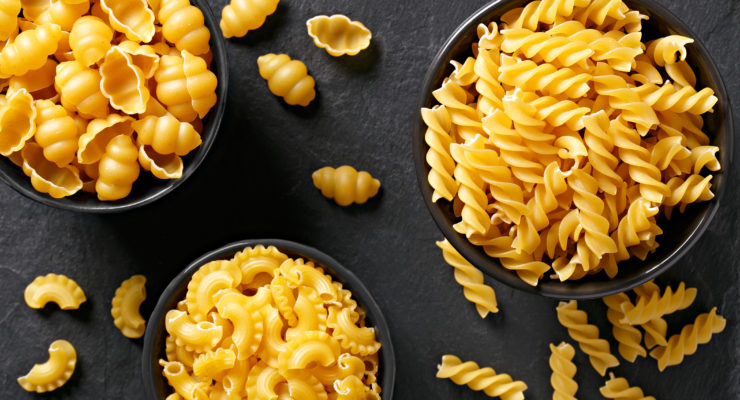How to Order at a Chinese Restaurant
Article posted in: Diet & Nutrition
According to the Chinese-American Restaurant Association, there are more than 45,000 Chinese restaurant locations operating in the United States—and it’s no wonder: The fare offered at American Chinese joints is generally affordable, comes in huge portions and offers a seemingly unending variety of sweet, sticky, savory sauces to top innumerable awesome meat, rice and noodle options.
But if you’re on a weight loss program, those mountainous portions and sticky sauces can slow down your progress. With a little guidance, you can make your Chinese dinner—whether it be at a restaurant or at home—a little more weight loss-friendly without sacrificing flavor.
Stay on track at the Chinese restaurant with these four easy tips:
1. For your appetizer
Instead of: Egg rolls
Order: Steamed dumplings and a bowl of soup
For many people, egg rolls are the king of Chinese restaurant appetizers, but they also sit on a throne of calories: At a popular national chain, four fried pork egg rolls clock in at 680 calories. Even if you split the order with a friend, you’re almost at a full meal’s worth of calories just from the appetizer.
Steamed pork dumplings can save you 480 calories per order of four and they’re still fun to eat in the bamboo steamer dish and filled with pork flavor. Pairing them with soup could help make the rest of your meal more satisfying: A cup of egg drop soup can run as few as 40 calories, but could help you save far more calories when your entree arrives: In a 2007 study, scientists found that having a low-calorie soup as a first course reduced the amount of calories participants ate at entree time by 20 percent.
2. For your entree
Instead of: Fried, breaded or crispy
Order: Simmered, steamed or roasted options.
That fry batter at a Chinese restaurant can add a lot more calories than you imagine: At the same national chain, “crispy” entrees run more than 1,000 calories each. Even if you cut the super-sized restaurant portion in half, you’re still downing 500 calories in a sitting.
Compare that to other delicious options like ginger chicken, which is only 530 calories for the whole, gigantic portion. Eat a little more than half of that dish with an extra side of broccoli and you could have calorie room for dessert. Want some bonus wiggle room? Order the sauce on the side. Chinese restaurant sauces can be 200 or more calories per serving. Control the amount you get by dipping the tines of your fork in the sauce-on-the-side before each bite—you’ll get the sauce’s flavor for far fewer calories.
3. Want a shellfish splurge?
Instead of: Shrimp-fried rice
Order: Prawns, scallops or shrimp on a sizzling platter.
Even in a side dish size, fried rice can clock in at almost 600 calories per serving. Switch that out for an entree-sized order of prawns, shrimp or scallops in a sizzling pan or platter and you’ll be able to eat the entire plate for the same number of calories. The sauces in “sizzling” dishes like these usually contain less sugar than sauces like sweet and sour or General Tso’s, since the sugar would caramelize or burn on such a hot pan. The pan sauces—things like lobster sauce and fish sauce—are thus lighter in calories, but still bursting with flavor—and what feels fancier than being delivered a steaming, sizzling pan?
4. Cooking at home?
Instead of: Duck dishes with white rice
Substitute: Chicken and brown rice
The calories may not be all that different, but these two swaps could make your at-home Chinese dish more filling and satisfying. Boneless duck breast has 179 calories per 100 grams, compared with 151 for the same amount of boneless, skinless chicken breast. But the chicken’s got more protein: 15 grams more in that 100-gram chunk. Protein isn’t just muscle-building gunk for bodybuilders, though. Besides building lean muscle tissue—which burns more calories at rest than fat—protein is digested more slowly than carbohydrates, so it stays in your system longer. This means you feel fuller, longer. High-protein meals are more satisfying.
When it comes to the rice, brown also aids in your digestion, but in a different way. The husk of brown rice is high in insoluble fiber, a type of the nutrient that your body can’t digest. It passes through your digestive system and helps stave off constipation to keep you regular.
Because the husk is removed, white rice has only 1/3 as much fiber—and flies through your system as a fast-acting carbohydrate. So while the two colors may be nearly equal in calories, brown will make your Chinese cooking nuttier, more flavorful—and better for your gut.
Check out this handy guide to better understand what you should order and avoid while out to eat:












